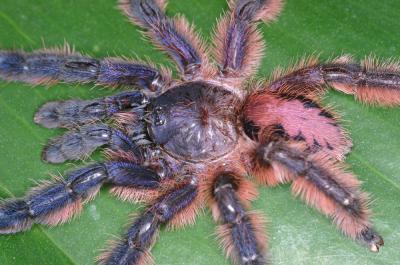Colorful Tree-Climbing Tarantulas Found in Brazil

A scientist has discovered nine new species of colorful tree-climbing tarantulas in central and eastern Brazil, including four belonging to a mysterious, old genus and others that are quite picky about which plants to choose as homes.
"Instead of the seven species formerly known in the region, we now have sixteen," Rogério Bertanim, a researcher at Brazil's Instituto Butantan, said in a statement.
So-called arboreal tarantulas previously have been identified in a few tropical places in Asia, Africa, South and Central America and the Caribbean. (The Amazon is their core habitat). These tarantulas have a light, agile build and pads at the end of their legs that make them better equipped to climb over the smooth surfaces of tree branches and plant leaves.
"In a resurrected genus (Typhochlaena) with a mysterious single species known from 1841, we have now five species," said Bertanim. "These are the smallest arboreal tarantulas in the world, and their analysis suggests the genus to be very old, so they can be considered relicts of a formerly more widely distributed taxon."
Bertanim also described a new species, Pachistopelma bromelicola, that lives only inside bromeliads, a type of flowering plant.
"Only a single species had been known to live exclusively inside these plants, and now we have another that specialized in bromeliads as well," Bertanim added.
They found another species, Iridopelma katiae, that seems to prefer taking shelter in these same plants in its habitat at the top of mountain tables where trees are rare.
Get the world’s most fascinating discoveries delivered straight to your inbox.
"This species also inhabits bromeliads, one of the few places for an arboreal tarantula to live that offer water and a retreat against the intense sunlight," Bertanim said.
The researcher says all the new species are highly specific to the regions where they're found and are being threatened by human activities.
The study was published online this month in the journal ZooKeys.





